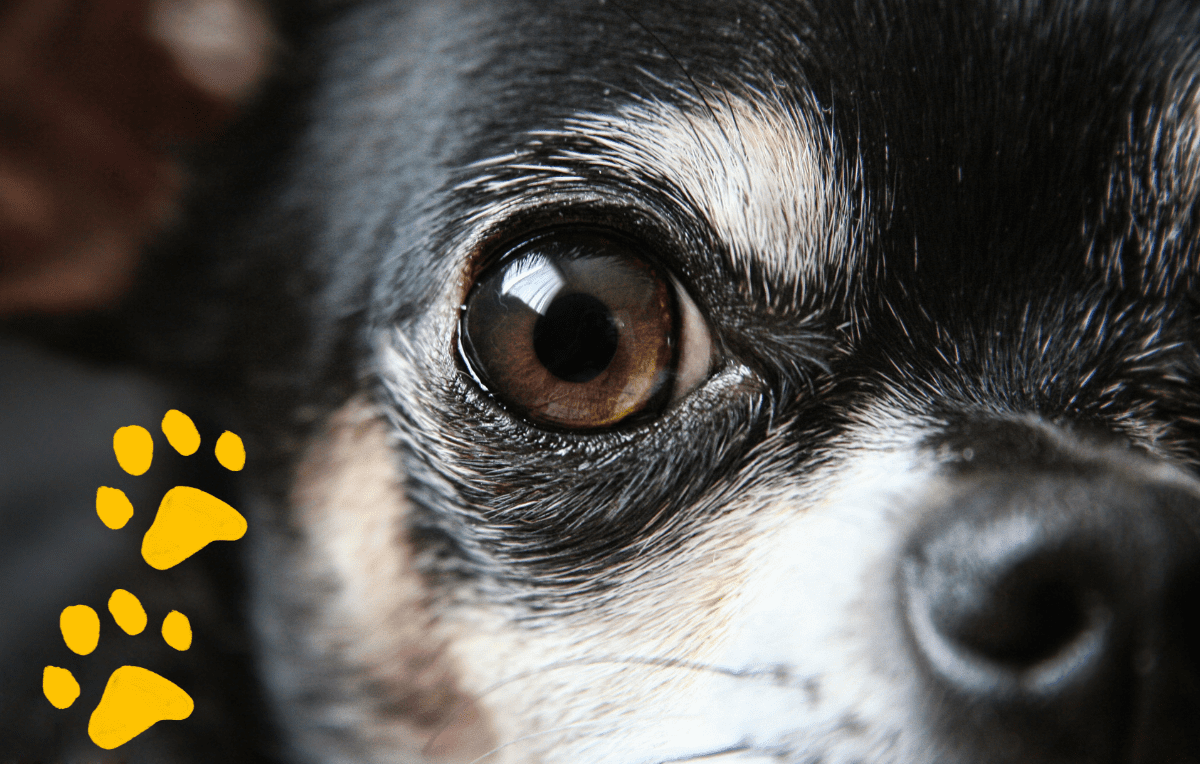2 min read
Are Dogs Colorblind? Not Exactly… And Other Fun Facts about Dog Vision
 Lindsay Millican
:
Mar 10, 2023 6:05:44 PM
Lindsay Millican
:
Mar 10, 2023 6:05:44 PM

Can you believe it? We’ve all been swooning over our pup’s puppy-dog eyes for years, yet there are still a lot of fun facts about dogs’ eyes and vision that most pet parents don’t know. So the next time Fido flashes those big brown eyes at you, take a second to pause and think about the hidden wonders of canine sight.
Cones and Rods
Have you ever wondered why your pup’s eyes sparkle in the dark? Well, it turns out that dogs’ eyes are special.
Dog vision differs from human sight because their eyes contain fewer cones to detect color, but many more rods for detecting light and motion. (Remember cones and rods from high school biology? Here’s a refresher.)
Plus, dogs have an extra layer of eye tissue called the tapetum lucidum, which reflects incoming light directly onto their retina, helping them navigate through nighttime and shadows with ease (and giving off that eerie green glow in photos).
Dichromatic Vision
If you’ve ever heard anything about dogs’ vision, it’s probably the persistent myth that dogs only see in black and white.
In reality, due to having fewer cones in their eyes, dogs have dichromatic vision, which is similar to a human with red/green colorblindness. They can see blue and yellow, plus various shades of gray.
If you’re curious about how you look to your pup, the Dog VISION Image Processing Tool can show you. So while dogs don’t get to enjoy all the vibrant hues that we do, they can still appreciate a colorful world.
Dogs Are Sensitive to Movement
It’s no surprise that our furry friends have an impressive ability to detect motion. With the additional rods in their eyes, dogs can detect motion much better than humans can.
They also have a wider range of peripheral vision, giving them the ability to spot even the slightest movement from a great distance. Keep this in mind the next time your dog is barking out the window at ‘nothing’ – you may not see what’s going on, but he could be picking up visual signals that your eyes aren’t able to detect.
Research Shows Dogs Prefer Certain Images
Every dog is different, but numerous research studies have shown that there are images and scenes that dogs consistently show more interest in. Other animals are at the top of the list, and dogs in particular.
A TV Channel Made Just For Dogs?
Yes, TV for dogs. It’s a thing. Our pack at DOGTV has spent years poring over scientific research learning about how to curate TV for dogs.
The colors have been adjusted to best suit a dog’s vision, prioritizing the blue and yellow color spectrums. DOGTV has also looked at vision-tracking studies to see what images and videos are most likely to get your dog’s attention.
The scenes are edited into quick snippets of content to keep your dog engaged, rather than longer clips, since research tells us that dogs have short attention spans.
And because television is not just a visual experience, DOGTV also caters to a dog’s sense of hearing. The content uses soothing sound frequencies to keep dogs calm and relaxed while their humans are out of the house. The pups will also hear sounds of squeaking toys and children laughing, which research shows will grab the dog’s attention. And you’ll often hear a “Good boy!” or “Good girl!” thrown into the mix because DOGTV believes our pups can never get too much positive affirmation.
Want to try DOGTV to see for yourself? New users can sign up here to get your first 7 days free, and watch your dog’s eyes light up (maybe even literally, thanks to the tapetum lucidum!) while you stream TV created just for them.
